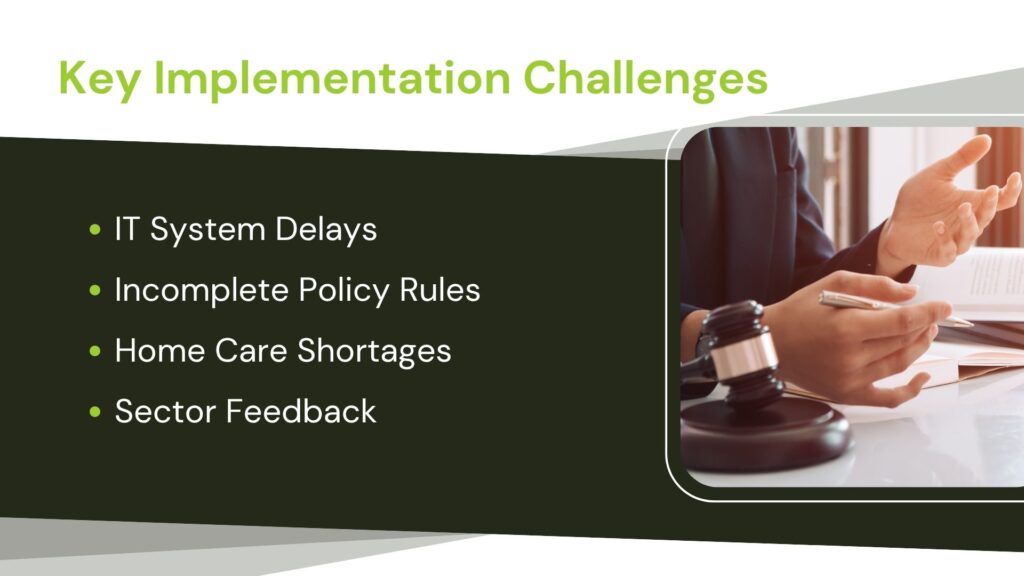Big changes are coming to aged care in Australia. The Aged Care Act 2025 aims to improve how older Australians receive support. It was supposed to kick off in July, but now it’s been pushed back to November 2025. The delay has left many people wondering what’s really going on.
In this quick guide, you’ll find out what the new Act is all about, why it’s been delayed, and what that means for older Australians. Let’s break it down so it’s easy to understand.
What Is the Aged Care Act 2025?
This new law is part of Australia’s bigger aged care reform. It follows recommendations from the Royal Commission into Aged Care Quality and Safety. The goal is to build a simpler, fairer, and more respectful system for ageing Australians.
Some key features include a stronger focus on people’s rights, more consistent standards, and one clear program called Support at Home. This change is supposed to make it easier for older people to stay in their homes longer, with the right support at the right time.
Why Was It Delayed?
The Act was meant to launch on 1 July 2025. But many people working in the sector raised concerns. Providers, unions, and aged care groups all said the timeline was just too tight.
They warned that trying to rush it could cause confusion, service gaps, or worse, people missing out on care. The government listened and decided to give everyone more time to get ready. Now, the new date is set for 1 November 2025. This extra time is meant to allow for better training, system testing, and the finalisation of new rules.
Key Implementation Challenges

The delay didn’t happen for no reason. Several big challenges came up along the way, and they couldn’t be ignored.
IT System Delays
The main digital platform that providers will use, the Government Provider Management System (GPMS), is not ready. It’s running behind schedule and over budget. Many worry it won’t work smoothly by November. This platform needs to handle everything from reporting to payments. If it fails, the entire rollout could stall.
Incomplete Policy Rules
The rules that guide funding, co-payments, and service pricing are still not clear. Aged care providers can’t plan properly if they don’t know the details. Without these, it’s hard to train staff or build systems that match the law.
Home Care Shortages
Right now, more than 80,000 older Australians are stuck on waiting lists for care. The government decided not to release any new packages until the new system launches. That means people are still waiting, and some may not get help when they need it most.
Sector Feedback
Most people in the aged care sector agree: the delay is necessary. But many also say this has to be the final extension. They want a firm commitment from the government and clear steps to make sure everything is ready by November.
How This Affects Older Australians
This delay has real consequences for real people. Every week, thousands of families wait for support that’s already been approved. But the help doesn’t come.
Some older people have sadly passed away before they received any care. Others are relying on their families, who may not be trained or able to give the support that’s needed. Many advocates are calling on the government to release urgent care packages now instead of waiting until November.
What Happens Next?
Between now and November, the government and providers have a lot to do. The Department of Health and Aged Care must finish writing and sharing all the new rules. These rules need to be simple, clear, and easy to follow.
Aged care providers will also keep preparing their staff, systems, and services. Everyone involved knows what’s at stake, and there’s strong pressure to avoid another delay. People working in the sector are also calling for regular updates. They want transparency and a safety net for those who can’t wait much longer.
Final Thoughts
The Aged Care Act 2025 brings hope for a better system, but that only matters if it works as promised. Delays can be frustrating, but they’re sometimes needed to make sure everything runs smoothly.
The real test won’t be the date on the calendar. It’ll be whether older Australians finally get the care and respect they deserve, without waiting any longer than they already have.
